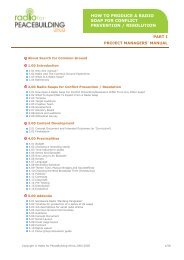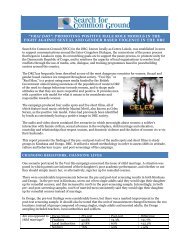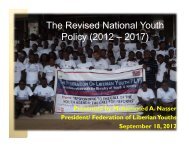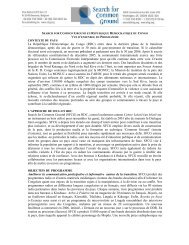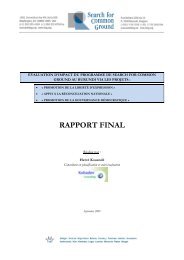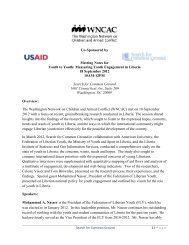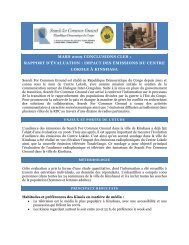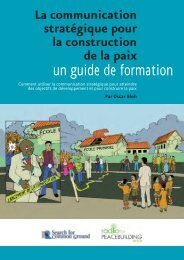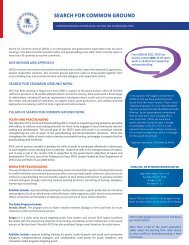The Common Ground Network for Life and Choice Manual
The Common Ground Network for Life and Choice Manual
The Common Ground Network for Life and Choice Manual
Create successful ePaper yourself
Turn your PDF publications into a flip-book with our unique Google optimized e-Paper software.
<strong>The</strong> dialogue design presented in the workshop plans uses active listening very proactively to<br />
change communication patterns. Aside from these scripted uses of active listening,<br />
whenever there is room <strong>for</strong> misunderst<strong>and</strong>ing of a question or a statement, it is good to ask<br />
<strong>for</strong> this <strong>for</strong>m of restatement from someone on the other side of the conflict. A simple<br />
statement works such as, "Can one of you who are pro-life please restate Ellie's question, so<br />
that we are sure we all know what she is asking?"<br />
Active listening can also be an effective way to defuse strong emotions or an argumentative<br />
tone. Assurance that a concern or viewpoint has been heard may reduce the person’s need to<br />
intensify or repeat what he or she is saying. (More on this in section 4, below.)<br />
3. Provide Time to Think. We ask facilitators to pause <strong>for</strong> a minute after introducing a<br />
dialogue question to allow participants time to consider their answer. This helps to produce<br />
thoughtful responses that are within the limited time frame that is given <strong>for</strong> answering. It<br />
also lets people devote themselves to listening once the dialogue begins because they have<br />
already thought about what to say. Last, this pause “levels the playing field” between people<br />
who are always to ready to talk, <strong>and</strong> those who need more time to put thoughts into words.<br />
4. Alternate Speakers. <strong>The</strong>re are two factors operating here. One is that the facilitator needs<br />
to appear even-h<strong>and</strong>ed. Another is that it is usually uncom<strong>for</strong>table <strong>for</strong> people to listen to at<br />
least some parts of what is said by those with whom they strongly disagree. For these<br />
reasons have speakers in the initial round of responding to a dialogue questions so that no<br />
one side “has the floor” <strong>for</strong> too long at a time. If the group undertakes the second small<br />
group dialogue activity of asking one another questions not taking turns in this way results in<br />
people on one side being on the answering end <strong>for</strong> what feels like an uncom<strong>for</strong>tably long<br />
time be<strong>for</strong>e the others get a chance to ask their questions. Beyond the initial round of<br />
responses, this can be let go unless you notice the participants on one side dominating the<br />
conversation.<br />
5. Draw out the <strong>Common</strong> <strong>Ground</strong>. <strong>The</strong> facilitator’s ear should be attuned to picking up<br />
themes, experiences, emotions <strong>and</strong> concerns that run through the conversation <strong>and</strong> cross the<br />
lines of conflict. <strong>The</strong> group can be asked if they have heard any commonalities. <strong>The</strong><br />
facilitator may suggest what he or she is hearing <strong>and</strong> test whether this con<strong>for</strong>ms to<br />
participants’ perceptions. This should not be <strong>for</strong>ced or artificial. But it is important.<br />
Because people usually come to dialogue on this <strong>and</strong> like issues with an assumption that a<br />
vast sea of difference divides them from their opposites, the early discovery of anything<br />
shared – e.g. the same anxiety about dialogue, the identical or a similar hero (these are<br />
opening questions in the initial small group dialogue) -- begins to break down that<br />
perception. As the dialogue progresses, the emergence of overlapping values <strong>and</strong> concerns<br />
becomes energizing <strong>and</strong> exciting <strong>for</strong> participants. Probably the most frequent answer to our<br />
evaluation question asking what participants liked best about a workshop is, they learned



